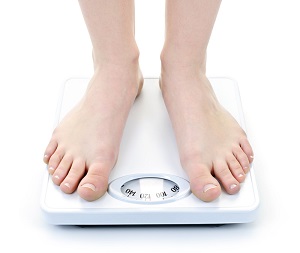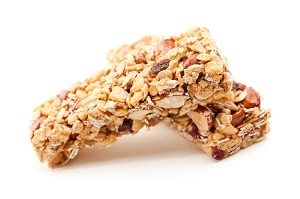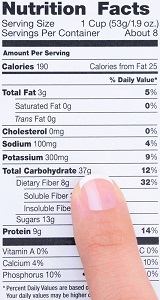
I consider quinoa a “superfood” because it is a complete protein, and it’s packed with fiber and other good stuff. Quinoa is a slow releasing carbohydrate that gives you a full feeling for a long time. This is ideal for weight control and to maintain adequate blood sugar levels. It is a complete protein because it contains all 9 essential amino acids, and includes lysine, which is essential for tissue growth and repair.
A cup of quinoa contains about 8 grams of protein, about twice that of other grains. Quinoa is a very good source of manganese, magnesium, iron, copper and phosphorus, making it especially valuable for persons which migraine headaches, diabetes, and atherosclerosis. It is a good source of riboflavin, which is necessary for energy productions within cells. Quinoa is gluten-free and is a great source of fiber.
Cooking with quinoa is simple and is just like cooking rice. The most basic method of cooking quinoa is to boil it in water and simmer for 10-12 minutes. You need 1 measure of quinoa to 2 measures of water. All the water will be absorbed by the quinoa. Some quinoa has a coating of bitter tasting saponins. In that case, you need to pre-rinse the quinoa to remove this coating before cooking. Once you have cooked the quinoa you can add it as a base for meat dishes instead of rice. You can also include it in salads and soups. I recently used it in Minestrone soup in place of pasta. It will take on the flavor of the foods you cook with and adds its own little bite to the taste.
Another way of incorporating quinoa in your meals is in the form of quinoa flour. Quinoa flour has a pleasant, nutty taste. It makes delicious bread, muffins, pasta, pancakes and more. When using quinoa flour in baking, substitute half the amount of all-purpose flour with quinoa flour, and then use all-purpose flour for the remaining half. Depending on the taste you are looking for in your baked good, you may want to use less quinoa flour than all-purpose. Experiment yourself and find what suits your taste buds best.
Try this easy Quinoa Recipe
Ingredients:
2 small onions, finely chopped
1 large red pepper, chopped
2 garlic cloves, minced
Sea salt
2 tbsp olive oil
1 cup of Quinoa
2 cups of water
2 vegetarian soup stock cubes
Directions:
First add the finely chopped onions, the minced garlic and sea salt to the olive oil in a pan or wok.
Saute until onions are slightly brown. Then add chopped red pepper and continue to sauté until onions are caramelized. Add water, then the stock cubes and quinoa and bring to a simmer. Stir once after 5 minutes then simmer for 15 minutes until water has been cooked in.
Enjoy Quinoa in your diet. Experiment by adding it to dishes where you normally use rice (think stir fries or soup). You’ll find it is a healthy, tasty addition to your meals!
For more articles go to http://lifesportfitness.lifestyleezine.com

 Nuts may be small, but they are packed full of nutrition. Most nuts are filled with heart-friendly fats, vitamins, proteins and minerals. Good things do come in small packages. Almonds
Nuts may be small, but they are packed full of nutrition. Most nuts are filled with heart-friendly fats, vitamins, proteins and minerals. Good things do come in small packages. Almonds The holiday season has come and gone. Many San Jose residents have “Shedding Holiday Weight” as a top priority on their to-do lists now. It’s time to work on losing those extra pounds gained from all the parties, holiday treats and family gatherings. With the abundance of rich foods at holiday time, it is no wonder that so many people suffer from holiday weight gain (yep, even your friendly
The holiday season has come and gone. Many San Jose residents have “Shedding Holiday Weight” as a top priority on their to-do lists now. It’s time to work on losing those extra pounds gained from all the parties, holiday treats and family gatherings. With the abundance of rich foods at holiday time, it is no wonder that so many people suffer from holiday weight gain (yep, even your friendly  Antioxidants have the power to protect you from disease and slow the aging process, as they fight the free radicals in your body that can harm your cells. If your antioxidant levels are low, oxidative stress can occur, making your susceptible to many illnesses including heart disease and cancer. Therefore, in order to keep your body healthy and your immune systems strong, you must consume an abundance of antioxidants on a daily basis. These powerhouses can be found in many fruits and vegetables, and common antioxidants include vitamin A, vitamin C, vitamin E, selenium, beta-carotene, flavonoids and
Antioxidants have the power to protect you from disease and slow the aging process, as they fight the free radicals in your body that can harm your cells. If your antioxidant levels are low, oxidative stress can occur, making your susceptible to many illnesses including heart disease and cancer. Therefore, in order to keep your body healthy and your immune systems strong, you must consume an abundance of antioxidants on a daily basis. These powerhouses can be found in many fruits and vegetables, and common antioxidants include vitamin A, vitamin C, vitamin E, selenium, beta-carotene, flavonoids and As one of the most prominent leafy vegetables in Europe, kale is a wondrous food with a plethora of beneficial qualities. Despite its amazing health benefits and international allure, kale still remains largely under the radar in North America. As a super raw food that is fairly inexpensive and easy to source, there is no reason why we all should not be cooking with this leafy green more often.
As one of the most prominent leafy vegetables in Europe, kale is a wondrous food with a plethora of beneficial qualities. Despite its amazing health benefits and international allure, kale still remains largely under the radar in North America. As a super raw food that is fairly inexpensive and easy to source, there is no reason why we all should not be cooking with this leafy green more often. The benefits of coconut water are numerous. Drinking coconut water is refreshing and amazingly healthy for our body. It is 100% made by nature from water filtering through the husk. Not only is it organic but it’s one of nature’s purest inventions. The water is 100% sterile, fat and cholesterol free contains half as much sodium as conventional sport drinks and is a great source of potassium. Drinking it every day will boost your blood circulation and improve your metabolism. It cleanses your internal organs particularly the digestive tract and helps process food easily.
The benefits of coconut water are numerous. Drinking coconut water is refreshing and amazingly healthy for our body. It is 100% made by nature from water filtering through the husk. Not only is it organic but it’s one of nature’s purest inventions. The water is 100% sterile, fat and cholesterol free contains half as much sodium as conventional sport drinks and is a great source of potassium. Drinking it every day will boost your blood circulation and improve your metabolism. It cleanses your internal organs particularly the digestive tract and helps process food easily.  Probiotics are essentially, good germs. The body is an ecosystem with millions of bacteria aiding digestion, manufacturing food for the body, killing unfriendly bacteria and maintaining balance with fungi. Probiotics are good bacteria that live in our bodies. There are more of these bacteria living inside of us than there are cells that make up our body. An estimated 500-600 trillion live cultures of probiotic bacteria live inside the body.
Probiotics are essentially, good germs. The body is an ecosystem with millions of bacteria aiding digestion, manufacturing food for the body, killing unfriendly bacteria and maintaining balance with fungi. Probiotics are good bacteria that live in our bodies. There are more of these bacteria living inside of us than there are cells that make up our body. An estimated 500-600 trillion live cultures of probiotic bacteria live inside the body.  Hunger is one of our primal human urges, but it’s a tough thing to grasp, a marionette with many masters. A variety of hormones and neurotransmitters pull the strings – appetite suppressors and boosters, plus others that affect satiety and stress – and they, in turn, are manipulated by our body clock.There are two kinds of hunger: physiological and reward-driven. One is ruled by our body’s instinct to find the energy it needs to survive, while the other is psychological, influenced by smell, sight, stress, and social and environmental settings – the gauntlet of daily life.
Hunger is one of our primal human urges, but it’s a tough thing to grasp, a marionette with many masters. A variety of hormones and neurotransmitters pull the strings – appetite suppressors and boosters, plus others that affect satiety and stress – and they, in turn, are manipulated by our body clock.There are two kinds of hunger: physiological and reward-driven. One is ruled by our body’s instinct to find the energy it needs to survive, while the other is psychological, influenced by smell, sight, stress, and social and environmental settings – the gauntlet of daily life.  Breakfast is the most important meal of the day and definitely should not be skipped. Eating breakfast in the morning helps to level off a personâs blood sugar, thus curbing their appetite throughout the remainder of the day. It gives the energy required to get you started. Morning can get very hectic, but it only takes a second to grab a quick meal to start your day out right.
Breakfast is the most important meal of the day and definitely should not be skipped. Eating breakfast in the morning helps to level off a personâs blood sugar, thus curbing their appetite throughout the remainder of the day. It gives the energy required to get you started. Morning can get very hectic, but it only takes a second to grab a quick meal to start your day out right. Are food labels really telling us the truth? Can we actually understand what they are saying? Although ingredient lists on food products are supposed to inform us, the consumers, about what’s contained in the product, this is sometimes not the case.Companies are able to mislead consumers by advertising healthier foods when actually their products contain completely different amounts of vitamins, carbohydrates, sugar, protein, fat – both saturated and unsaturated, sodium, cholesterol and various other ingredients. Ignore the hype on the front of the packaging; ignore how attractive the packaging may be. This is just to distract the consumer into buying the product. There are a couple of things to consider when looking at the nutrition label.
Are food labels really telling us the truth? Can we actually understand what they are saying? Although ingredient lists on food products are supposed to inform us, the consumers, about what’s contained in the product, this is sometimes not the case.Companies are able to mislead consumers by advertising healthier foods when actually their products contain completely different amounts of vitamins, carbohydrates, sugar, protein, fat – both saturated and unsaturated, sodium, cholesterol and various other ingredients. Ignore the hype on the front of the packaging; ignore how attractive the packaging may be. This is just to distract the consumer into buying the product. There are a couple of things to consider when looking at the nutrition label.